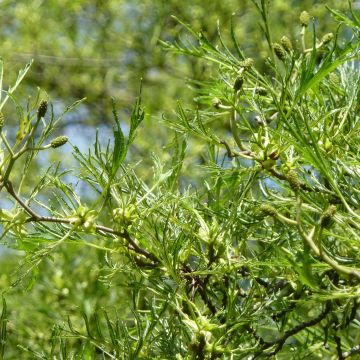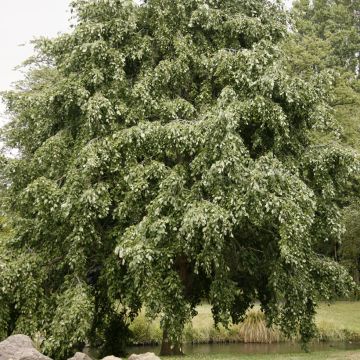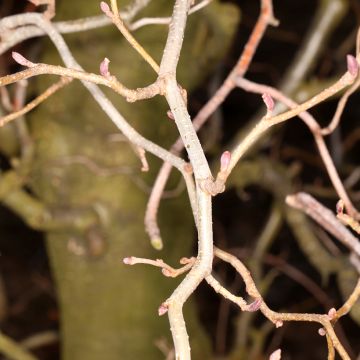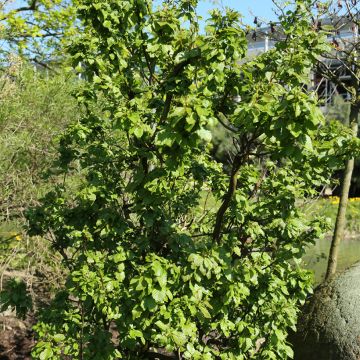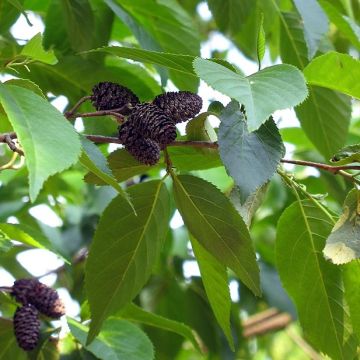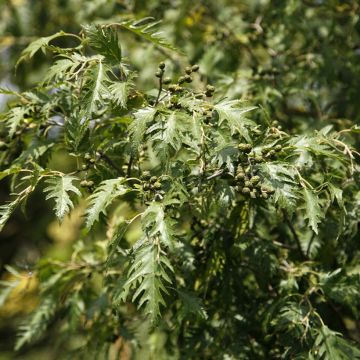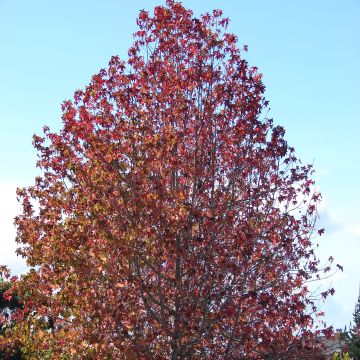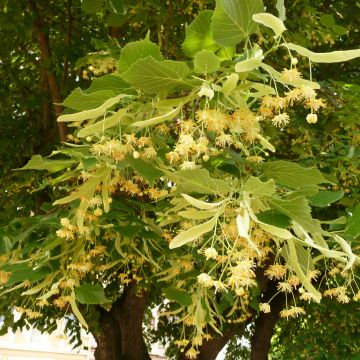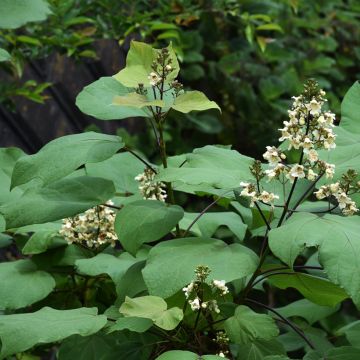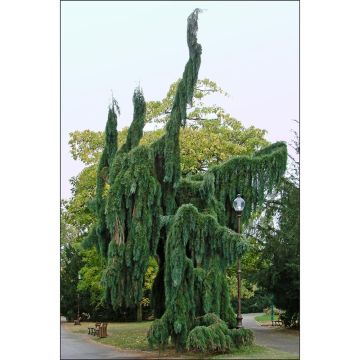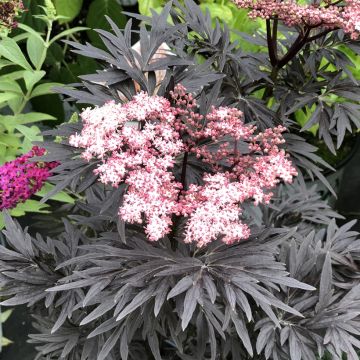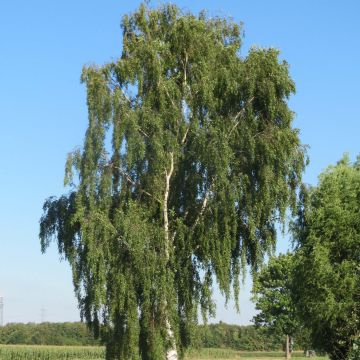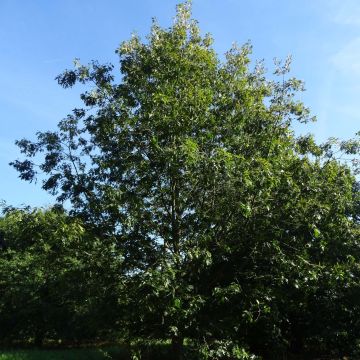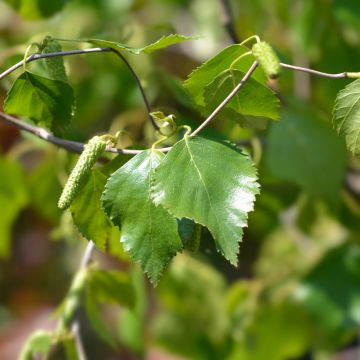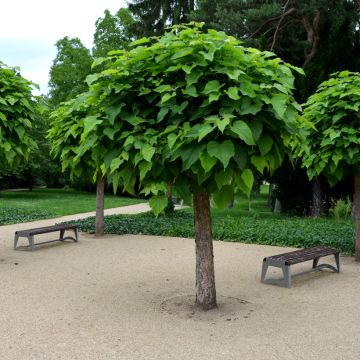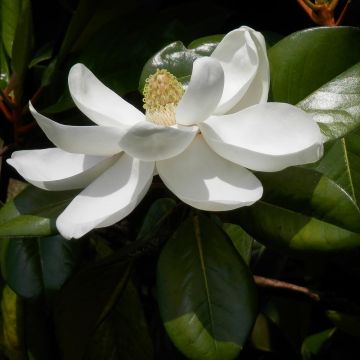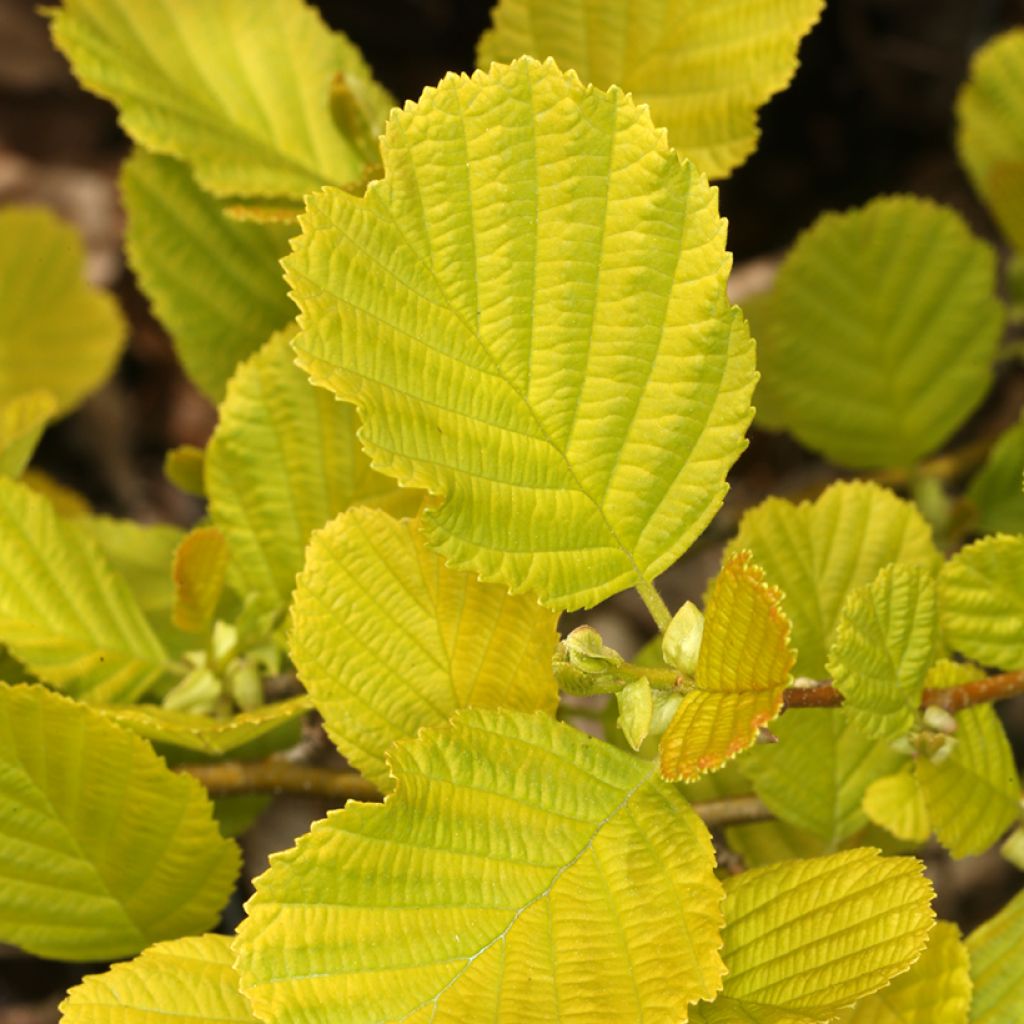

Alnus glutinosa Aurea - Common alder, Black alder, European alder
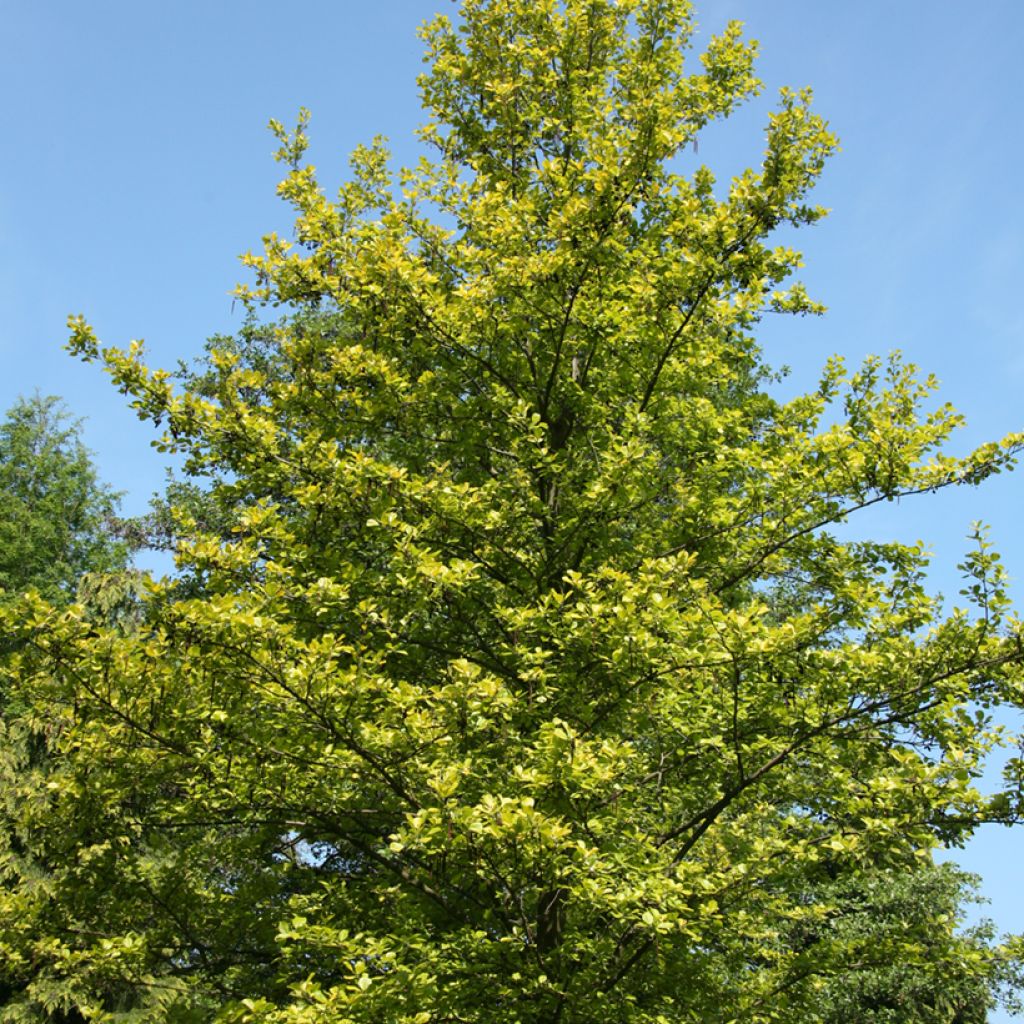

Alnus glutinosa Aurea - Common alder, Black alder, European alder
Alnus glutinosa Aurea - Common alder, Black alder, European alder
Alnus glutinosa Aurea
Common alder, Black alder, European alder
This item cannot be shipped to the selected country
Oversize package delivery charge from €6.90
Delivery to Corse prohibited
More information
Schedule delivery date,
and select date in basket
This plant carries a 24 months recovery warranty
More information
We guarantee the quality of our plants for a full growing cycle, and will replace at our expense any plant that fails to recover under normal climatic and planting conditions.
Oversize package: home delivery by special carrier from €6.90 per order..
Express home delivery from €8.90.
Delivery to Corse prohibited: UE law prohibits the import of this plant from mainland France to Corse as part of the fight against Xylella fastidiosa. Please accept our sincere apologies.
More information
Does this plant fit my garden?
Set up your Plantfit profile →
Description
Alnus glutinosa 'Aurea' is a form of Common Alder or Black Alder, characterised by moderate growth and particularly bright foliage, yellow-orange in spring turning to golden light green in summer. Its brown branches bear numerous pendulous male catkins, ranging from yellow-green to brown, from March, alongside discreet female catkins. Suitable for moist soils and medium-sized gardens, this elegant small tree also has excellent resistance to diseases and pests.
Alnus glutinosa 'Aurea' is a variant of the common alder. In harsh climates and poor, marshy, and oxygen-deprived soils, Common Alder, with its rot-resistant and lightweight wood, reigns supreme. This deciduous tree belongs to the Betulaceae family and is widespread in the native flora of Europe, extending to Scandinavia. It is sometimes referred to as "vergne" or "verne". The 'Aurea' cultivar, from which it originates, is distinguished by the colour of its foliage. It is a small tree with a dense pyramidal habit, reaching a height of 8 to 10 m and a spread of about 4 m. Its growth rate is rather slow. The leaves are slightly sticky to the touch, especially on juvenile leaves. The buds are purple and also sticky, particularly in winter. The oval-shaped leaves can reach up to 8 cm in length, with a rounded yip. The young spring leaves are coloured yellow-orange and then greenish in summer. Flowering takes place in March. Each tree bears discreet female catkins and pendant male catkins, reaching 6-7 cm in length, with a brown-yellow colour. The fruits are small 2 cm long cones called strobiles, which appear from September onwards and remain on the branches for a long time. Each cone contains tiny winged fruits that will be dispersed by the wind. This tree retains its foliage for a long time in autumn. It has a deep root system, which allows it to resist wind and flooding.
As a pioneer species, loving water from any source, the Common Alder and its varieties are used as solitary trees, in tree lines, in groves, or to retain banks along streams, natural ponds, or in damp, acidic soils of humid undergrowth. It should be kept away from foundations and buildings, as its extremely developed root system (up to 4 m deep) is capable of obstructing drinking water pipes. To accompany the 'Aurea' Common Alder, for example, choose a Nyssa sylvatica and Bald Cypress (Taxodium distichum), which require similar growing conditions. Two fern species can also be planted at its base, such as Sensitive Fern, in neutral to acidic and moist soil, in full sun or partial shade, and Marsh Fern (Dryopteris palustris). A luminous small tree, ideal for riverside or marsh scenes, in light shade or full sun.
The Common Alder is also a utilitarian tree, used in forests to prepare and improve the soil before planting poplars. Considered a green manure by foresters, it purifies and enriches the soil in which it is planted, as its roots convert atmospheric nitrogen into plant proteins. Its wood, almost rot-resistant in water, was once used for the construction of underground water pipes and channels. A large part of the city of Venice is said to have been built on alder wood piles.
Report an error about the product description
Alnus glutinosa Aurea - Common alder, Black alder, European alder in pictures
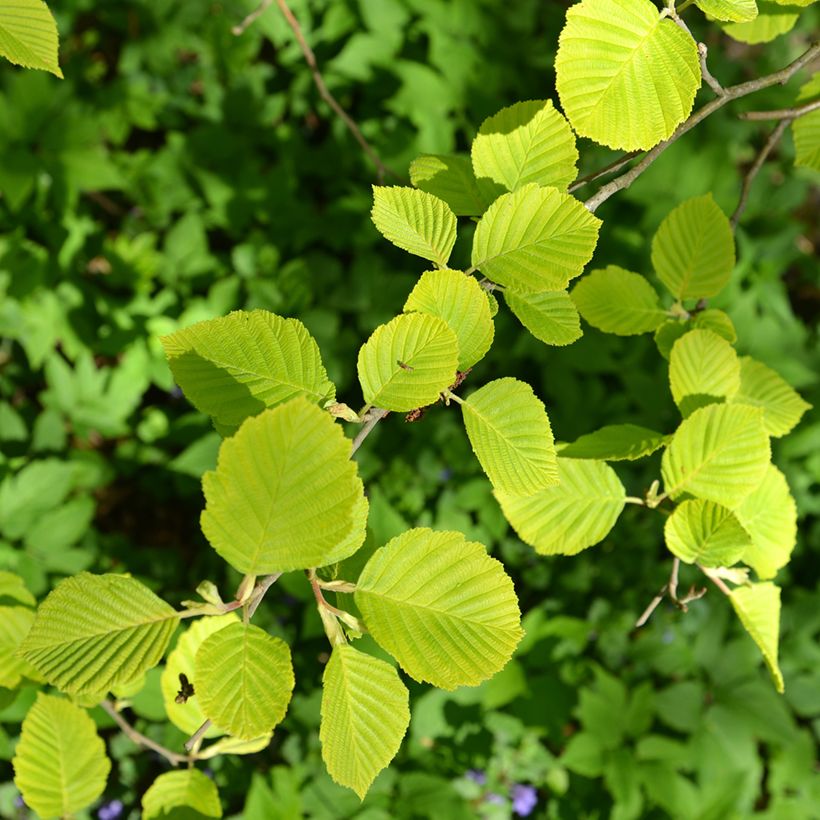

Plant habit
Flowering
Foliage
Safety measures
Botanical data
Alnus
glutinosa
Aurea
Betulaceae
Common alder, Black alder, European alder
Western Europe
atteinterespiratoire
Cette plante peut entraîner des symptômes allergiques.
Evitez de la planter si vous ou vos proches souffrez de rhinite saisonnière ("rhume des foins").
Davantage d'informations sur https://plantes-risque.info
Other Alnus - Alder
Planting and care
Easy to grow in consistently moist to wet, even waterlogged soil, the 'Aurea' Common Alder requires little maintenance. It can be planted in moist, humus-bearing soil, even peaty and poor soil, preferably acidic, in full sun or partial shade. It also tolerates slightly calcareous soils and is resistant to wind. Only prune to remove dead or unwanted branches.
Planting period
Intended location
Care
This item has not been reviewed yet - be the first to leave a review about it.
Trees and large shrubs
Haven't found what you were looking for?
Hardiness is the lowest winter temperature a plant can endure without suffering serious damage or even dying. However, hardiness is affected by location (a sheltered area, such as a patio), protection (winter cover) and soil type (hardiness is improved by well-drained soil).

Photo Sharing Terms & Conditions
In order to encourage gardeners to interact and share their experiences, Promesse de fleurs offers various media enabling content to be uploaded onto its Site - in particular via the ‘Photo sharing’ module.
The User agrees to refrain from:
- Posting any content that is illegal, prejudicial, insulting, racist, inciteful to hatred, revisionist, contrary to public decency, that infringes on privacy or on the privacy rights of third parties, in particular the publicity rights of persons and goods, intellectual property rights, or the right to privacy.
- Submitting content on behalf of a third party;
- Impersonate the identity of a third party and/or publish any personal information about a third party;
In general, the User undertakes to refrain from any unethical behaviour.
All Content (in particular text, comments, files, images, photos, videos, creative works, etc.), which may be subject to property or intellectual property rights, image or other private rights, shall remain the property of the User, subject to the limited rights granted by the terms of the licence granted by Promesse de fleurs as stated below. Users are at liberty to publish or not to publish such Content on the Site, notably via the ‘Photo Sharing’ facility, and accept that this Content shall be made public and freely accessible, notably on the Internet.
Users further acknowledge, undertake to have ,and guarantee that they hold all necessary rights and permissions to publish such material on the Site, in particular with regard to the legislation in force pertaining to any privacy, property, intellectual property, image, or contractual rights, or rights of any other nature. By publishing such Content on the Site, Users acknowledge accepting full liability as publishers of the Content within the meaning of the law, and grant Promesse de fleurs, free of charge, an inclusive, worldwide licence for the said Content for the entire duration of its publication, including all reproduction, representation, up/downloading, displaying, performing, transmission, and storage rights.
Users also grant permission for their name to be linked to the Content and accept that this link may not always be made available.
By engaging in posting material, Users consent to their Content becoming automatically accessible on the Internet, in particular on other sites and/or blogs and/or web pages of the Promesse de fleurs site, including in particular social pages and the Promesse de fleurs catalogue.
Users may secure the removal of entrusted content free of charge by issuing a simple request via our contact form.
The flowering period indicated on our website applies to countries and regions located in USDA zone 8 (France, the United Kingdom, Ireland, the Netherlands, etc.)
It will vary according to where you live:
- In zones 9 to 10 (Italy, Spain, Greece, etc.), flowering will occur about 2 to 4 weeks earlier.
- In zones 6 to 7 (Germany, Poland, Slovenia, and lower mountainous regions), flowering will be delayed by 2 to 3 weeks.
- In zone 5 (Central Europe, Scandinavia), blooming will be delayed by 3 to 5 weeks.
In temperate climates, pruning of spring-flowering shrubs (forsythia, spireas, etc.) should be done just after flowering.
Pruning of summer-flowering shrubs (Indian Lilac, Perovskia, etc.) can be done in winter or spring.
In cold regions as well as with frost-sensitive plants, avoid pruning too early when severe frosts may still occur.
The planting period indicated on our website applies to countries and regions located in USDA zone 8 (France, United Kingdom, Ireland, Netherlands).
It will vary according to where you live:
- In Mediterranean zones (Marseille, Madrid, Milan, etc.), autumn and winter are the best planting periods.
- In continental zones (Strasbourg, Munich, Vienna, etc.), delay planting by 2 to 3 weeks in spring and bring it forward by 2 to 4 weeks in autumn.
- In mountainous regions (the Alps, Pyrenees, Carpathians, etc.), it is best to plant in late spring (May-June) or late summer (August-September).
The harvesting period indicated on our website applies to countries and regions in USDA zone 8 (France, England, Ireland, the Netherlands).
In colder areas (Scandinavia, Poland, Austria...) fruit and vegetable harvests are likely to be delayed by 3-4 weeks.
In warmer areas (Italy, Spain, Greece, etc.), harvesting will probably take place earlier, depending on weather conditions.
The sowing periods indicated on our website apply to countries and regions within USDA Zone 8 (France, UK, Ireland, Netherlands).
In colder areas (Scandinavia, Poland, Austria...), delay any outdoor sowing by 3-4 weeks, or sow under glass.
In warmer climes (Italy, Spain, Greece, etc.), bring outdoor sowing forward by a few weeks.

































